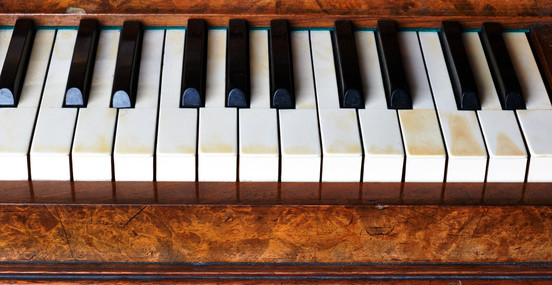Contemplating restoring your vintage piano? One of the first places to start is determining how old your instrument is. Here in the industry, we use a handful of historical publications that cross reference brand names with serial numbers in order to target the date your piano was produced.
To find your serial number, most pianos have the brand name and serial number inside the instrument near the strings or the soundboard. An upright will have the information just inside the lid, or stamped on the back of the piano. A grand will usually stamp the information near the soundboard. Organs and melodeons are usually stamped inside the cabinet, or will sometimes use a handwritten tag or sticker, depending on the age. Keep in mind that any ages or dates you find within these stamps are likely to be associated with the date the manufacturer went into business, not the date the piano was manufactured.
If a piano has ever been unprofessionally finished or restored, the original brand information may have been removed. Look throughout the inside of the piano. The inside information usually remains, even if the unprofessional finisher placed identifying material on the outside hoping to increase its value.
Once you find the brand name and serial number, give us a call and we will assist you in determining the age of your instrument.
Age can sometimes correlate to value, though if the piano is unrestored it may only be worth a fraction of its potential. Think of a car sitting in a garage, covered in rust, and nonoperational due to neglect. It has little value. But if its restored to its original beauty, depending on the make and model may provide a tidy sum. Pianos work in a very similar manner.
When a piano is professionally restored, it refers to the process a professional uses to rebuild both the internal and external parts of the piano. Restoration includes rebuilding all of the working parts within the piano, as well as the cosmetic items that give the piano its look and feel.
Over the past few years, we’ve seen the market for vintage pianos increase dramatically in part due to the education and ability to learn more about the process. When vintage pianos sat in storage or an old garage, they were passed along from family to family with little thought of their value. Today, because people care more about value, we have more people interested in restoring their pianos, and likewise more people willing to invest in a quality piano that has quality through and through. If you have a piano and are wondering what your next step is, give us a call today. We’ll help you with the process and give you the steps to take to restore your own vintage piano.


